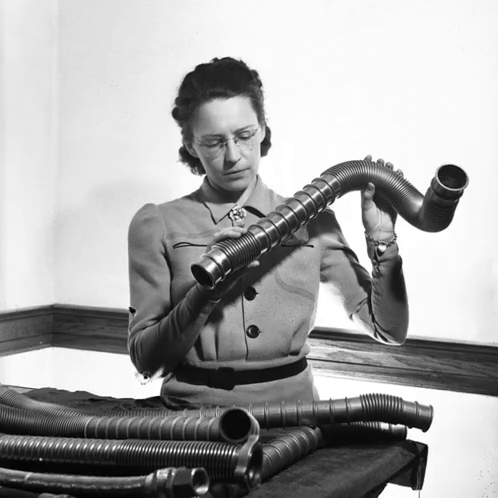
“
The challenge of winning the war was thrown directly to the Canadian engineer. We are working not just for the satisfaction of winning the fight for our side, but for the glory of hastening peace to the world.
Elsie MacGill built warplanes that helped win World War II. But she never sat in a cockpit, and she was not a pilot. She was something rarer: a Canadian aerospace engineer. She was also the first woman in the world to earn a master’s degree in aeronautical engineering.
Born in Vancouver in 1905 and raised by a single mother who broke legal barriers of her own (she was British Columbia’s first woman judge), Elsie grew up surrounded by the idea that women could and should lead. She brought this spirit with her to her career, studying engineering at the University of Toronto. In 1927 she became the first woman in Canada to earn a degree in electrical engineering. This was an era when most women were discouraged from even applying to engineering school, yet she promptly enrolled in a Master’s program at the University of Michigan.
In 1929, McGill became the first woman in North America to earn a Master’s degree in aeronautical engineering. Shortly after graduating, she contracted polio and doctors told her she might never walk again. But Elsie had a special kind of determination. She relearned how to walk with canes, and once she was (literally) back on her feet she began doctoral studies at MIT, but left after a couple of years to begin her career in the aviation industry, beginning with Fairchild Aircraft based out of Longueuil, Quebec. There, she worked on new aircraft designs and even flew on test flights of her prototypes.
Elsie MacGill proved herself continually in her field and by 1938, she was appointed Chief Aeronautical Engineer at the Canadian Car and Foundry in North Bay, Ontario. With World War II looming, the Canadian government needed to produce fighter aircraft at scale and the factory retooled to help with the war efforts and the company began to manufacture Hawker Hurricanes — one of the most important Allied planes of the war.
Under Elsie’s leadership, the factory did more than just build these planes. She redesigned them, introducing improvements to handle Canadian winters, including ski landing gear and de-icing systems. She also reorganized the production process, increased factory output, and helped train thousands of workers, many of them women stepping into industrial roles for the first time.
As a result of her leadership, the company manufactured over 1,400 Hawker Hurricanes, almost a tenth of the entire wartime production and Elsie became known as the Queen of the Hurricanes. She embraced the title not as a celebrity but as a symbol of what was possible when skill, drive, and resilience came first regardless of gender.
After the war, Elsie turned her focus to public service. She served as a commissioner on Canada’s Royal Commission on the Status of Women, where her advocacy helped shape future policies around gender equality and workplace rights.
Elsie MacGill never asked for fame, but what she built spoke for itself: Planes that helped win a war, a blueprint for production excellence, and a cultural shift that opened doors for women in engineering and beyond.
She showed that a builder is not defined by gender, by titles or status or pre-defined career paths. A builder is someone who sees what needs to be created, how systems can be improved, and commits to making it real.

